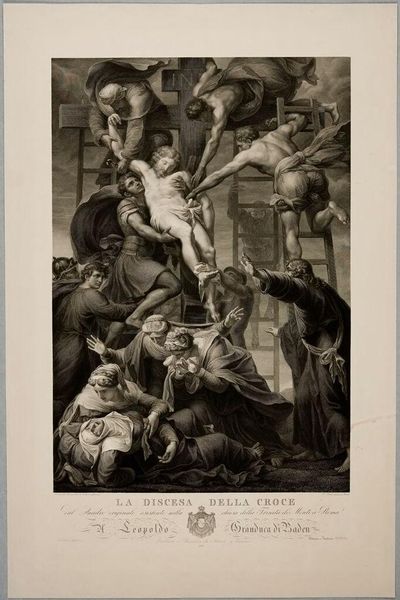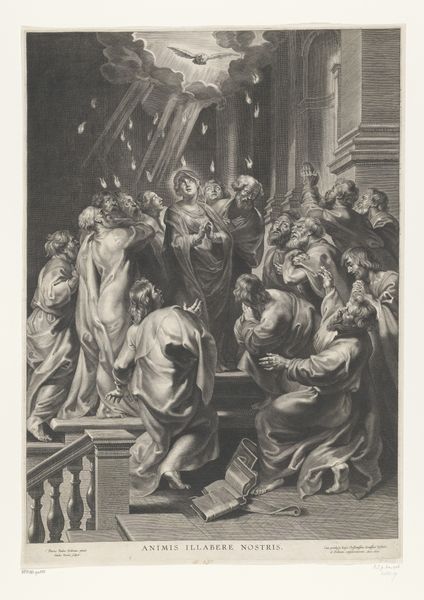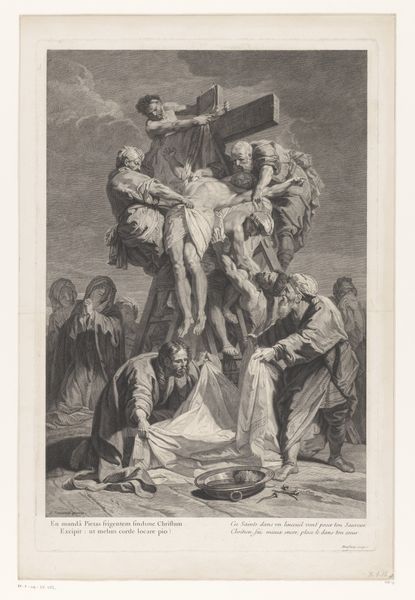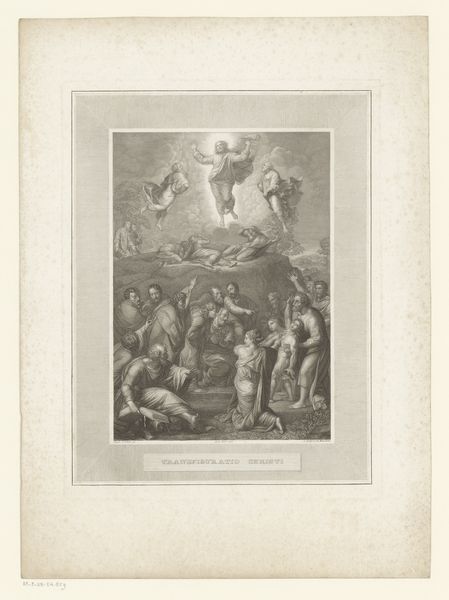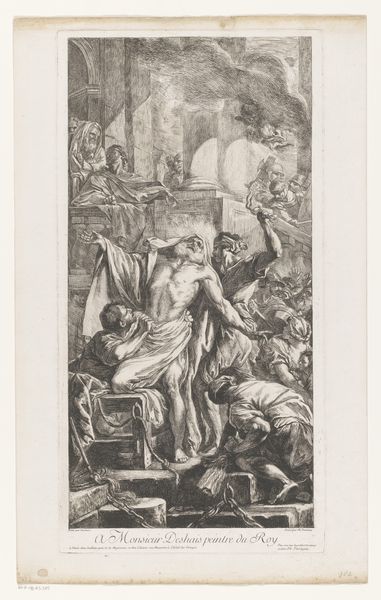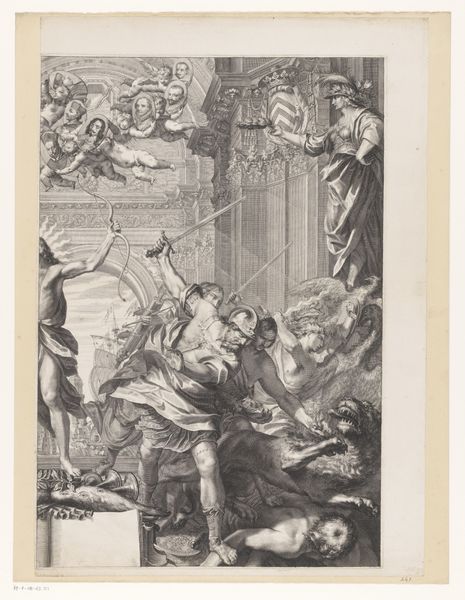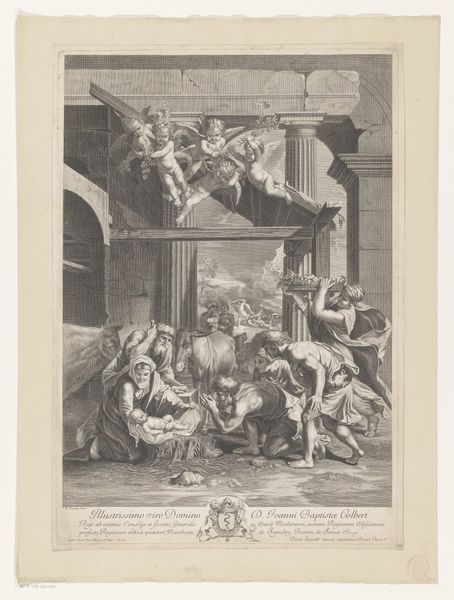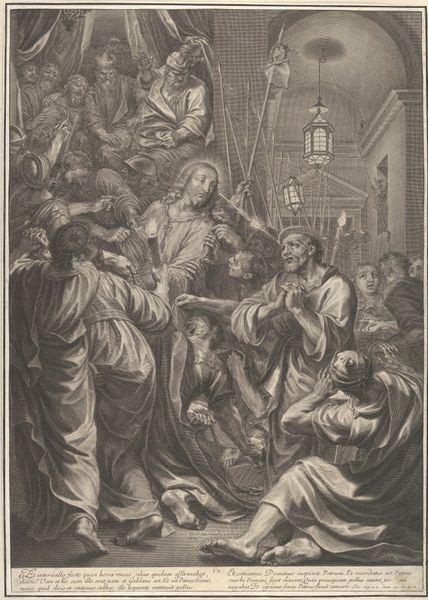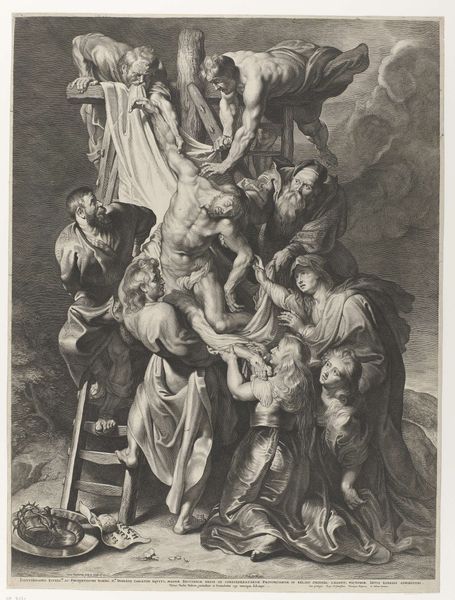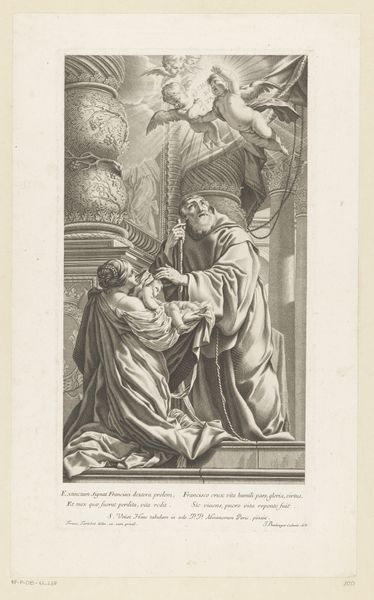
print, engraving
#
print photography
#
light pencil work
# print
#
figuration
#
line
#
history-painting
#
engraving
Dimensions: height 929 mm, width 640 mm
Copyright: Rijks Museum: Open Domain
Curator: This print, titled "De kruisafneming", translates to "The Descent from the Cross," and it’s believed to be made by Paolo Toschi before 1843. What catches your eye initially? Editor: The scale, undoubtedly. The figures loom, almost overflowing the space, creating a very theatrical atmosphere. I can feel their sorrow as if it were my own. Curator: It's fascinating how Toschi uses engraving to evoke such strong emotion. Prints at this time helped spread artworks widely; this print shares a famous altarpiece image far and wide. In thinking about this work’s composition, I think the arrangement of figures makes it particularly powerful. Editor: Absolutely. The figures on the ladder feel almost unstable, precarious. This precariousness heightens the vulnerability inherent in the body of Christ. Note that the people below also look precarious. In this historical context, where social and political upheaval was common, representing the loss of authority and stability had weight. It's also quite a male vision. Where are the powerful women? I mean, really, where? Curator: True, the women seem primarily observers, grieving, although central to the scene itself. Their role seems defined by mourning rather than action, a reflection, perhaps, of societal norms during that period. Still, the emotion conveyed, from swooning in grief to helping take the savior down, rings true. It's quite visceral. Even the texture, achieved through line engraving, is fantastic, with dense lines creating areas of deep shadow, enhancing the overall drama. I can imagine those lines like a roadmap that traces moments and encounters that are heavy with the symbolism of Jesus' journey and ministry. Editor: A roadmap of trauma, perhaps? Engraving becomes more than a mere technique, it transforms into a language for representing profound historical events. What about the role of art in helping to heal such events? How do we continue conversations about trauma with newer generations who might not have similar personal recollections of them? Curator: I think this print reminds us that grappling with painful histories is necessary for our collective evolution. The empathy and sorrow Toschi captured can continue to challenge and encourage contemporary reflection, providing a language of shared vulnerability, in that journey forward. Editor: That rings very true for me too. Thanks for unpacking it all with me.
Comments
No comments
Be the first to comment and join the conversation on the ultimate creative platform.
